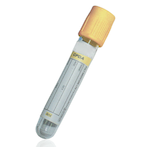
- Home
- Clinical Chemistry Tests
- Folate
Folate
Specimen Volume
5-10 ml vacutainer (minimum sample volume 75 uL)Sample Preparation
Turnaround Time
1 daySample Processing In Laboratory
UsualSample Stability
Serum is stable at 2-8˚C for up to 48 hours. For longer periods (up to 28 days), store serum frozen at -20˚C.
General Information
Folate and folic acid are forms of a water-soluble B vitamin. Folate occurs naturally in food. Folic acid is the synthetic form of this vitamin that is found in supplements and some fortified foods. Folate plays an important role in the formation of cofactors for certain vital metabolic reactions, and are also essential components in the production of DNA. Folate measurement is often clinically indicated, since left untreated, folate deficiency can lead to megaloblastic anaemia and a deficiency in pregnancy has been associated with neural tube defects in the foetus. It is important to measure B12 and folate in all patients suspected of having low levels of either vitamin. Folate deficiency usually arises from inadequate intake, malabsorption or increased requirements (pregnancy, lactation, or excessive alcohol consumption). Signs of folic acid deficiency are often subtle. Diarrhoea, loss of appetite, and weight loss can occur. Additional signs are weakness, macroglossia, headaches, heart palpitations, irritability, and behavioural disorders.
Patient Preparation
For patients receiving therapy with high biotin doses (i.e. >5 mg/day), samples should be taken at least 8 hours post dose. It is contraindicated to measure samples of patients receiving therapy with certain pharmaceuticals, e.g. methotrexate or leucovorin, because of the cross‑reactivity of folate binding protein with these compounds. Samples with extremely high total protein concentrations (e.g. patients suffering from Waldenström’s macroglobulinemia) are not suitable for use in this assay. Haemolysis may significantly increase folate values due to high concentrations of folate in red blood cells. Therefore, hemolyzed samples are not suitable for use in this assay. In rare cases, interference due to extremely high titers of antibodies to streptavidin and ruthenium can occur. These effects are minimized by suitable test design.
Notes
Haemolysis may significantly increase folate values due to high concentrations of folate in red blood cells. Therefore, hemolyzed samples are not suitable for use in this assay. Samples with extremely high total protein concentrations (e.g. patients suffering from Waldenström’s macroglobulinemia) are not suitable for use in this assay. In rare cases, interference due to extremely high titers of antibodies to streptavidin and ruthenium can occur. These effects are minimized by suitable test design.
Reference Range
3.1 - 20.5 µg/L
Source of Reference Range
Abbott DiagnosticsSpecifications
-
EQA Status:
NEQAS
- EQAS Scheme: Yes
Creation Date
Monday, 08 August 2011Modification Date
Monday, 10 February 2020General Information
Location of Laboratories
Copyright UHB Pathology 2018
Protection of Personal Information – Clinical Laboratory Services comply with the Trust Data Protection Policy and have procedures in place to allow the Directorate and it’s employees to comply with the Data Protection Act 1998 and associated best practice and guidance.
University Hospitals Birmingham medical laboratories at Queen Elizabeth Hospital, Heartlands Hospital, Good Hope Hospital and Solihull Hospital are UKAS (United Kingdom Accreditation Service) accredited to the ISO 15189:2012 standard. For a list of accredited tests and other information please visit the UKAS website using the following link: https://www.ukas.com/find-an-organisation/
- Molecular Pathology is a UKAS accredited medical laboratory No. 8759
- Biochemistry is a UKAS accredited medical laboratory No. 8910
- Haematology and Transfusion is a UKAS accredited medical laboratory No. 8784
- Clinical Microbiology is a UKAS accredited medical laboratory No. 8760
- Cellular Pathology is a UKAS accredited medical laboratory No. 10141
- Musculoskeletal laboratory is a UKAS accredited medical laboratory No. 9897
- Heartlands, Good Hope and Solihull Hospital pathology laboratories are a UKAS accredited medical laboratory No.8217.
Tests not appearing on the UKAS Schedule of Accreditation currently remain outside of our scope of accreditation. However, these tests have been validated to the same high standard as accredited tests and are performed by the same trained and competent staff.
For further test information, please visit the test database: http://qehbpathology.uk/test-database
For further information contact Louise Fallon, Quality Manager, 0121 371 5962
 Biochemistry
Biochemistry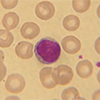 Haematology and Transfusion
Haematology and Transfusion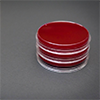 Clinical Microbiology (Including Virology)
Clinical Microbiology (Including Virology)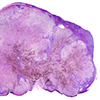 Cellular Pathology
Cellular Pathology General Information
General Information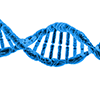 Molecular Pathology
Molecular Pathology